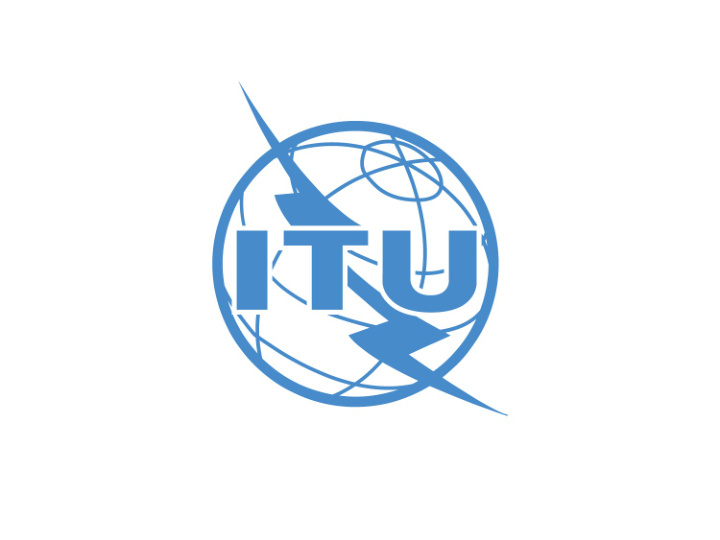



ID & Authentication Systems in Digital Financial Services Paul Makin, 19 th April 2017
Introduction • This presentation summarises a report prepared by Consult Hyperion on behalf of the International Telecommunications Union (ITU) to identify and evaluate digital ID and authentication systems, both private and state-led for their use and impact on Digital Financial Services (DFS) and financial inclusion. • Updates have been made to reflect recent developments since the publication of that report.
Terminology and Techniques PRINCIPALS
Terminology Term Definition Identity A unique individual (or organisation) distinguishable from others Attribute An item of verified personal data linked to an identity Credential A digital certificate or equivalent that can be used to assert ownership of an identity or attribute. Relying Party The party that wants to determine identity (that it is the same one seen before) or establish some attribute. NOTE: Current focus is almost exclusively in one direction Identity Provider Organisation or service assisting individual (or organisation) in managing identity and attributes. Attribute Organisation or service that can verify and assert a specific attribute. Provider Note organisations may be both APs and RPs. Level of A measure of the strength of identification and authentication in the Assurance identity or attribute assertion. Federated Asserting an identity or attribute established in one context in a Identity different context, e.g. Social logon, GSMA Mobile Connect
What do we mean by digital identity? Dynamic Static Identity Proofing Establish identity Recognition Reputation Authentication Assert identity Relationship Authorisation Use identity 6
Different Flavours TOP DOWN A core digital identity created out of a national identity scheme or similar, which is based on the formal establishment of identity and enables a wide variety of services. Many examples: Aadhaar (India), NADRA (Pakistan), NIMC (Nigeria) 9475629 9475629 ADMIT ONE BOTTOM UP A digital identity arising from the needs of a particular sector (usually the financial sector). Can also be a method of giving control back to the individual – ‘self - sovereign’ identity . Examples: BVN (Nigeria), SecureKey (Canada), Gov.UK Verify 9475629 ADMIT 9475629 ONE 7
Digital Identity and DFS: Desirable Characteristics • The digital identity, of whatever type, must present a Unique ID • Supports the development of richer financial services and thus economic development • Must offer strong authentication to tie the person or entity presenting the identity to the original registrant. Biometric authentication is increasingly desirable.
Level of Assurance Level of assurance is a measure of the quality of a digital identity, based on: 1. The quality of the steps taken to verify the claimed attributes 2. The robustness of the authentication credentials established. Ranges from LoA 1 (minimal confidence) to LoA 4 (very high confidence), as defined by ISO/IEC 29115.
Existing Services EXAMPLE IDENTITY SERVICES
India: Aadhaar • The foundation of many Governmental and fintech initiatives in India • Every resident has a digital identity, biometrically authenticated via a centralised service • Supports eKYC, Aadhaar-enabled bank accounts, payment services, merchant payments, etc – all made even more effective through the PMJDY bank account initiative
Pakistan: NADRA • Every citizen has a digital identity, held both on a smartcard (CNIC) and at a centralised service, biometrically authenticated • Supports offline authentication • Every mobile phone SIM is linked to a NADRA ID (not necessarily that of the user) – makes Mobile Connect a valuable proposition
Nigeria: NIMC, BVN • NIMC (top down) based on lessons learnt from NADRA and Aadhaar; card-based, with data replicated at a centralised service. Did not translate as well as expected to Nigeria. • BVN (bottom up) arose as a response from the financial sector – biometrically authenticated via a centralised service. No card is issued. • BVN underpins the mCash mobile payments service. • NIBSS report that the BVN will be migrated into NIMC when that service is ready.
Services and Technologies Offering Significant Potential EMERGING IDENTITY SOLUTIONS
Mobile Connect • Developed by the GSMA to enable customers to create and manage a universal digital identity via a single log- in solution • A major undertaking by the GSMA and its members with the objective of establishing secure digital identities and consented data sharing, leveraging the security afforded by the SIM • Uses a federated model, built around the OpenID Connect specifications • Depending on implementation, can offer from LoA 2 to LoA 4
Self-Sovereign Identity • The individual is their own identity provider — there is no external party who can claim to “provide” the identity for them because it is intrinsically theirs. • A self-sovereign identity can include attributes/endorsements from traditional identity sources, such as passport providers, the purpose of which is to strengthen the LoA associated with the identity. • So even in the context of self sovereign identities, the conventional 'identity providers' will not vanish - but instead of providing you with your identity they will instead be verifying and attesting to the validity of some aspects of your self-asserted identity .
DLT for Identity An area of significant potential. Examples: • Self-sovereign identities (Sovrin) • Identities as smart contracts (uPort) • Sovereign identities and KYC sharing (Tradle) • Government-issued identities, DLT and Mobile Connect (ShoCard)
CONCLUSIONS
Conclusions • Top down identity services are in many cases desirable, but they are not always the best fit • They can take many years to establish; in the interim, bottom up solutions should be embraced • Initiatives such as Mobile Connect, and services based around DLT, demonstrate that non-governmental solutions can be agile and meet the needs of individuals and the relying parties • The sector is fast-moving and innovative, and should be monitored closely • This should be backed up with appropriate policy initiatives by governments and supervisory bodies
Recommend
More recommend